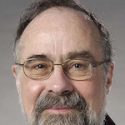UW historian helps PBS paint vivid picture of the California Gold Rush
As an historian, Susan Lee Johnson finds few subjects of American history more irresistible than the California Gold Rush, a movement that unfolded so fast and furiously that it must seem like watching history get shot from a cannon.
“Almost nothing draws people as quickly as the possibility of digging cash out of the earth,” says Johnson, a professor of history and Chicana/o and Latina/o Studies at the University of Wisconsin–Madison. “The California Gold Rush was not just a ‘get rich quick’ phenomenon; it happened at a peculiar point in both U.S. and world history that just kind of made people go nuts.”
Johnson is one of the experts who contributed to the documentary “The Gold Rush,” which will run this month as part of the acclaimed PBS history series “American Experience.” Using primary sources such as letters and memoirs, the film pieces together real personal stories of gold-rush adventurers hoping to strike it rich, while adding perspective from authors and professional historians.
Wisconsin Public Television will air “American Experience: The Gold Rush,” on Monday, Nov. 6, from 8-10 p.m.
Johnson was interviewed by the filmmakers in San Francisco, in a stately Victorian home that was a product of the astounding wealth amassed from the Gold Rush era. The film focuses on the first big wave of the rush, from 1848 to 1853, when surface mining and individual prospecting still prevailed in the foothills of the Sierra Nevada.
Johnson’s research on the gold rush culminated in a 2000 book, “Roaring Camp: The Social World of the California Gold Rush,” which was awarded a Bancroft Prize in 2001. The book focuses on the undertold story of the Gold Rush as a truly global phenomenon, creating a cultural and ethnic meeting ground “concentrated in a very small geographic area, in a very big hurry.”
Her research focuses on the southern portion of the gold country in the drainage of the San Joaquin River, where the racial and cultural mix was most pronounced. In short order, the area once inhabited by about 7,000 American Indians grew tenfold in population, and the region drew an international cast of characters: miners from Mexico, Chile, Peru, France, Belgium and China, converged with American miners from the North and South, including both enslaved and free African Americans.
“I was drawn to looking at how the largely male communities organized themselves, and also how men from various racial, ethnic and national groups interacted with one another,” she says. With the population 90 percent male, gold seekers had to rethink divisions of labor and determine how to share domestic work or else relegate it to different groups.
“There was a lot of conflict, but more so over time: the first interactions were fairly benign because there was plenty of gold,” she says. “This wasn’t the case, though, between Indian people and non-Indians. For native people, a homeland was being invaded; a valley that had 1,000 people suddenly has 10,000, and those interactions were violent from the get-go.”
Indeed, the documentary chronicles the ugly side of the Gold Rush experience and its racial strife, including the fact that four-fifths of California’s huge native population was wiped out in 10 years from disease, starvation and violence. It also looks at the legalized discrimination of state-imposed “foreign miners taxes” that were specifically designed to curtail the participation, first, of Mexicans and Chileans, and, later, of Chinese miners.
Gold discoveries have commonly triggered mass movements, but the California rush was unique and important in a number of ways, Johnson says. Most of all was its global scale: Never before had a rush produced so many waves of immigration from around the world, the reflection of a market revolution that was creating an increasingly interconnected world.
Johnson says it is also rewarding to be part of this project as a representative of UW–Madison, which has a rich tradition of scholarship and teaching on the American West. One of those famous historians is Frederick Jackson Turner, whose 1893 “frontier thesis” is recognized as the first work to elucidate the significance of the frontier experience and to insist that it shaped “the American character.”


